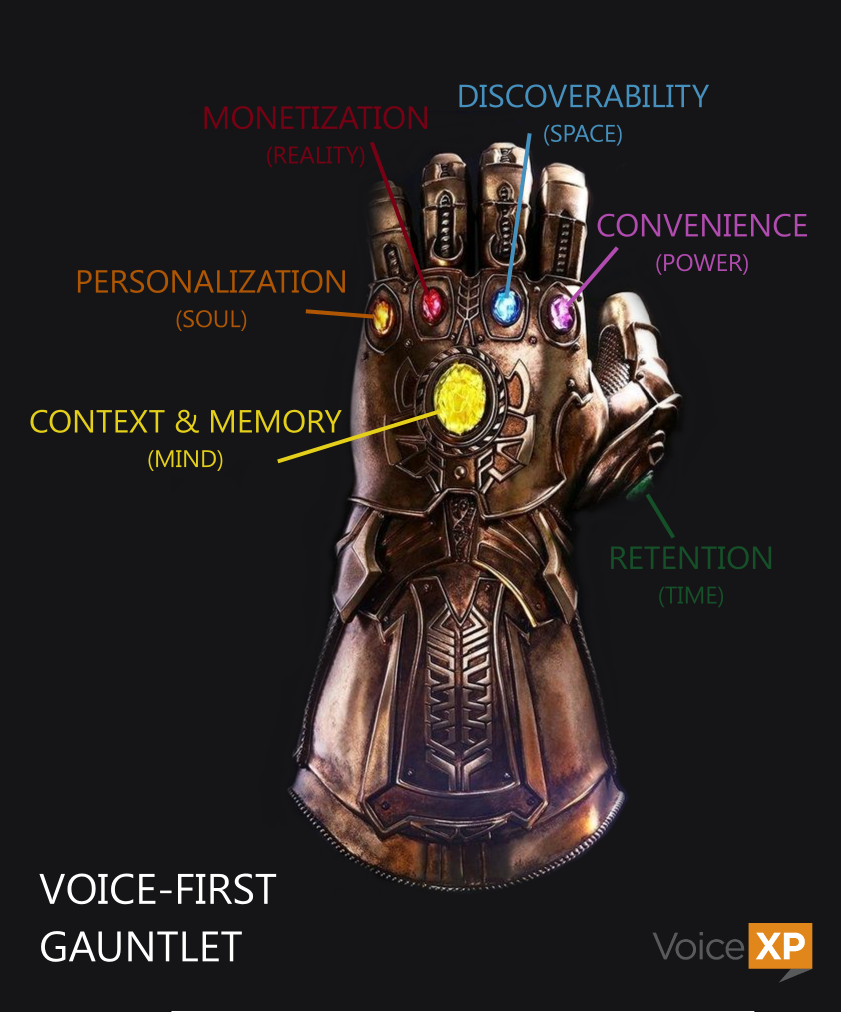VoiceFirst infinity stones
I saw this image of a voice gauntlet by Mark Tucker on Twitter. Are you fans of Marvel? I wouldn’t say I’m a fan of anything cause I don’t lose it over teams or companies, but if I have to be a fan of something it has to be Pixar and or Marvel. And for those who have seen their latest biggest success movie, Infinity war, where all the cinematic universe click together like a big puzzle, then you heard about the gauntlet and the infinity stones. In this episode we take you to the wonderful world of the VoiceFirst infinity stones.
Let me remind you first that there are six stones in the Marvel universe:
Soul, reality, space, time, power and mind.
The VoiceFirst infinity stones
Now for VoiceFirst, that will translate as: Personalization is the soul stone, monetization is reality stone, discoverability is the space stone, convenience is the power stone, retention is the time stone and context and memory is the mind stone.
With monetization, discoverability, personalization, convenience, retention and keeping context and memory, almost all of the voice puzzle come together as well.
There is another stone
But I think a piece is missing: the tongue stone: internationalization. Voice is the technology that can understand people instead of people understanding and adapting to the technology. And for reaching more users, to move beyond the English speaking countries, internationalization has to become a upfront strategy for voice.
Each stone has different challenges and a road to travel before we can say it’s solved, but they are the pieces that needs to come together for great voice experiences. I hope it does not takes us 18 movies to figure it out!
Go to voicefirstweekly.com/flashbriefing/78 to see the image and the tweet.
Send me fandom of marvel comparisons with voice tech if you have any, or send me any Marvel fandom stuff, I’ll promise to watch and read.
Remember to subscribe, like, comment and share this episodes. My name is Mari, and you can find me on Twitter as voicefirstlabs and on Instagram @voicefirstweekly. Thank you for listening you have a great day and we’ll talk tomorrow!

